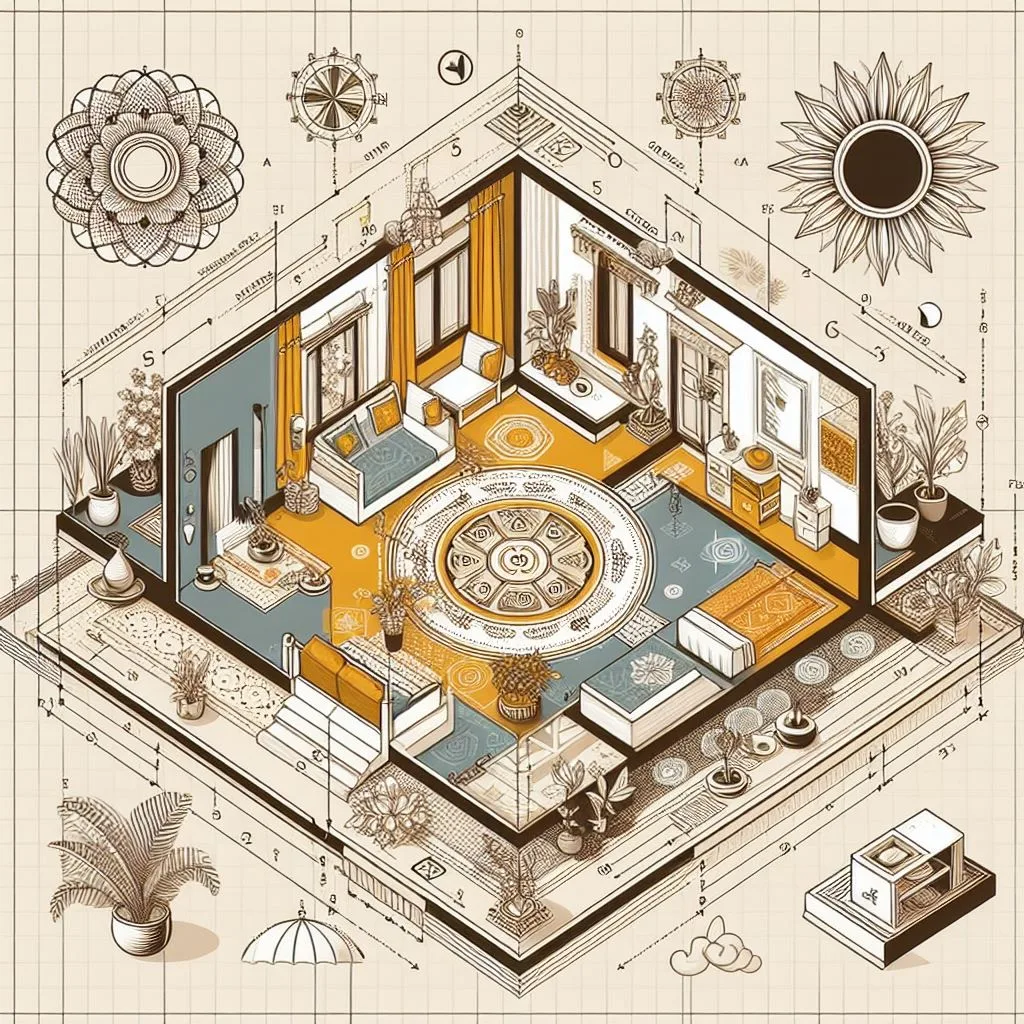In the intricate tapestry of Indian culture, there exists a profound ancient wisdom that permeates through various aspects of life – from spirituality to architecture. Among these treasures is Vaastu Shastra, a traditional Indian science of architecture and design. Rooted in the belief that the spatial arrangement and orientation of buildings can influence human lives,

Vaastu Shastra offers a comprehensive framework for creating harmonious living spaces. This introductory exploration aims to shed light on the fundamental principles, historical context, and contemporary relevance of it.
Understanding the Principles of Vaastu:
At its core, Vaastu Shastra is founded upon the principle of aligning built environments with the natural forces and cosmic energies that govern the universe. The word “Vaastu” translates to “dwelling” or “building,” while “Shastra” denotes a scientific or systematic approach. Thus, Vaastu Shastra can be understood as the science of harmonizing human habitats with the surrounding environment.
Central to Vaastu Shastra are five elements – earth, water, fire, air, and space – which are believed to constitute the universe and influence all aspects of life. According to this philosophy, every structure, whether a home, temple, or workplace, should be designed in harmony with these elements to promote health, prosperity, and overall well-being.
The layout and orientation of a building, as prescribed by Indian culture, are determined by factors such as cardinal directions, topography, and surrounding natural features. For instance, the entrance of a house should ideally face east, as it symbolizes the rising sun and brings in positive energy. Similarly, the placement of rooms, the arrangement of furniture, and even the selection of colors are guided by Vaastu principles to optimize the flow of energy within a space.
Historical Context:
The origins of this knowledge can be traced back to ancient Indian texts known as the Vedas, particularly the Atharvaveda and the Rigveda, which contain references to architectural principles and spatial planning. Over time, these teachings evolved into a comprehensive system of knowledge that found expression in the construction of temples, palaces, and cities across the Indian subcontinent.
One of the earliest known treatises on Vaastu Shastra is the Mayamatam, believed to have been composed between the 5th and 8th centuries CE. This text, attributed to the sage Maya, provides detailed guidelines for the design and construction of buildings, emphasizing the importance of symmetry, proportion, and alignment with celestial bodies.
During the medieval period, this knowledge flourished under the patronage of kings and emperors who commissioned grand architectural projects reflecting the principles of cosmic harmony. The Chola, Hoysala, and Vijayanagara dynasties, among others, left behind magnificent temples and forts that embody the essence of Vaastu Shastra.
Contemporary Relevance:
Despite the passage of centuries, this knowledge continues to exert a significant influence on contemporary architecture and interior design in India and beyond. In an age marked by technological advancements and rapid urbanization, the principles of this building techniques offer a timeless wisdom that resonates with individuals seeking balance and tranquility in their living spaces.
In modern urban landscapes, architects and designers often incorporate principles into their projects to create environments that foster harmony and well-being. From residential complexes to commercial buildings, the principles of orientation, spatial organization, and energy flow are carefully considered to enhance the quality of life for occupants.
Moreover, the resurgence of interest in holistic living and sustainable design has led to a renewed appreciation for the ecological wisdom inherent in this Shastra. By prioritizing natural materials, energy efficiency, and environmental consciousness, contemporary practitioners of this Shastra strive to create spaces in home design that are not only aesthetically pleasing but also in harmony with nature.
Conclusion:
In conclusion, Vaastu Shastra stands as a testament to the profound connection between human beings and the built environment. Embedded within its principles is a deep understanding of the subtle energies that shape our lives, offering guidance on how to create spaces that nurture our physical, emotional, and spiritual well-being.
As we continue to navigate the complexities of modern life, the wisdom of Vaastu Shastra serves as a guiding light, reminding us of the importance of living in harmony with nature and aligning our surroundings with the cosmic rhythms of the universe. Whether through the design of our homes, workplaces, or public spaces, the principles of Vaastu Shastra continue to inspire us to create environments that uplift the human spirit and foster a sense of balance and wholeness.
